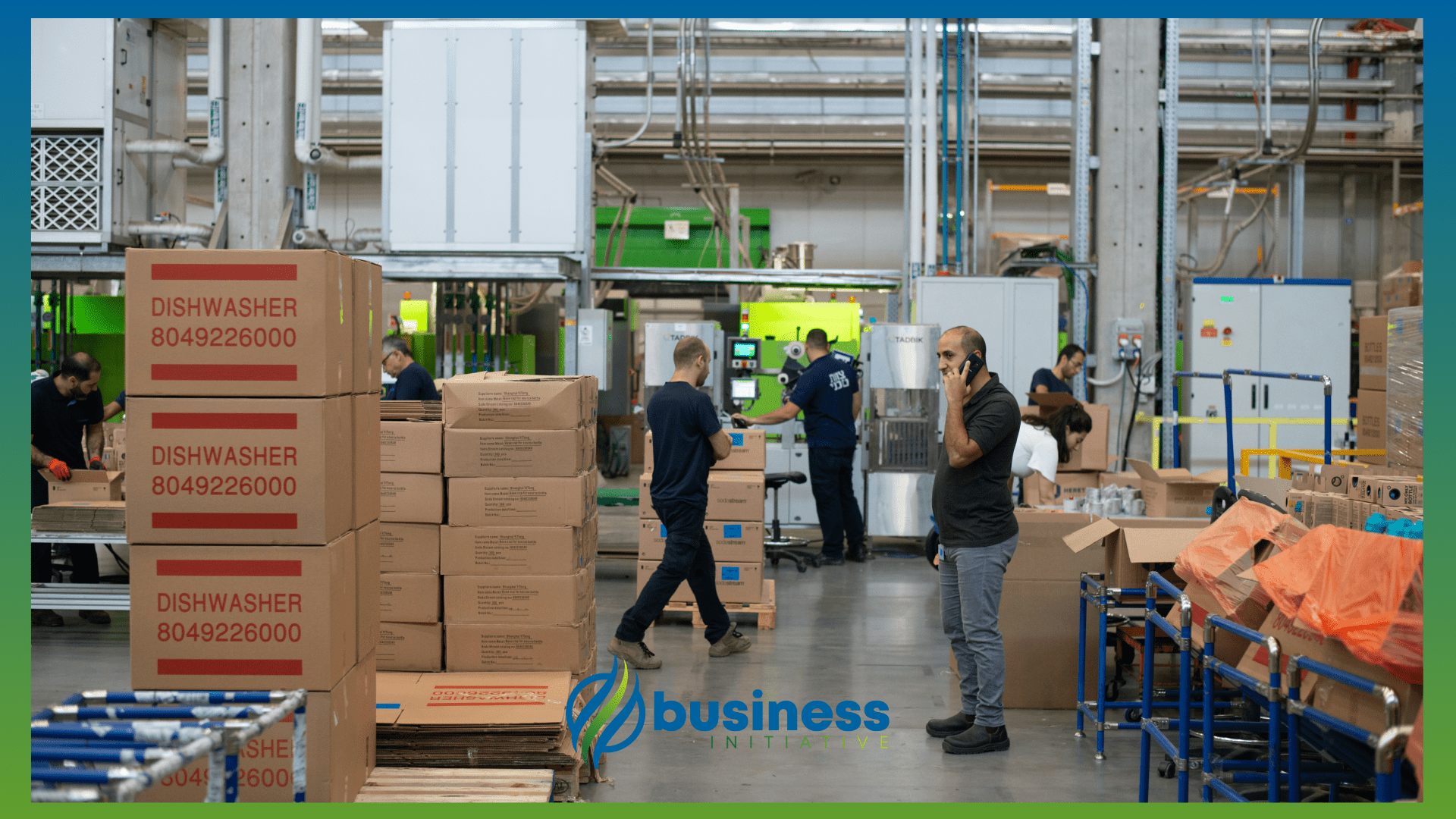The number of employees at small businesses can vary greatly depending on the industry in which they operate.
In this article, we will explore the average number of employees at small businesses across different industries.
 Key Takeaways
Key Takeaways
- Small Business Definition: A small business generally has fewer than 500 employees, with exact numbers varying by industry and sector.
- Professional Services: Largest sector with 4.7M small businesses, majority operating without employees.
- Transportation and Warehousing: Second largest with 3.8M businesses, predominantly non-employer firms.
- Construction: 3.6M small businesses with varied workforce sizes from 1-499 employees.
- Retail Trade: Over 3M small businesses, with significant representation across all employee size categories.
According to the Small Business Administration (SBA), a small business has fewer than 500 employees.
This definition applies to a wide range of industries, including retail, manufacturing, construction, and professional services.
What is the average number of employees in a small business?
Let’s have a look at how the number of employees compares in small businesses arcoss various industries…
➤ Take Initiative: Increase your company's employee retention rates
Average Number of Employees in Small Businesses by Industry (2023)
Sources:
- U.S. Small Business Administration Office of Advocacy’s 2024 Small Business Profile
- U.S. Census Bureau’s Statistics of U.S. Businesses (SUSB)
Note: These figures represent the distribution of small businesses with employees versus those without employees across different industries in the United States, based on the latest SBA data.
Industry Distribution
Let’s examine how small businesses are distributed across major industries:
Professional, Scientific, and Technical Services
This is the largest sector with 4.7 million small businesses. The breakdown shows:
- 3.8 million businesses without employees
- 805,237 businesses with 1-19 employees
- 51,526 businesses with 20-499 employees
This sector demonstrates that many professional service providers operate as independent contractors or freelancers.
Transportation and Warehousing
The second-largest sector with 3.8 million small businesses:
- 3.6 million businesses without employees
- 199,970 businesses with 1-19 employees
- 22,569 businesses with 20-499 employees
The high number of non-employer firms in this sector reflects the growth of gig economy transportation services.
Construction
A significant sector with 3.5 million small businesses:
- 2.8 million businesses without employees
- 702,944 businesses with 1-19 employees
- 60,436 businesses with 20-499 employees
Construction shows a healthy mix of independent contractors and small to medium-sized firms.
Retail Trade
Retail comprises 3 million small businesses:
- 2.4 million businesses without employees
- 589,130 businesses with 1-19 employees
- 54,456 businesses with 20-499 employees
This sector demonstrates the diverse nature of retail operations, from solo entrepreneurs to larger small businesses.
Retail

Retail represents a significant portion of small businesses, with over 3 million businesses in total.
The breakdown shows that:
- 78.6% operate without employees
- 19.5% have 1-19 employees
- 1.9% employ 20-499 people
This distribution reflects the diverse nature of retail operations, from solo entrepreneurs running online stores to larger small businesses with multiple locations.
Trends and Challenges in the Retail Industry:
- E-commerce Integration: Businesses are adopting hybrid models combining online and physical presence, affecting staffing needs.
- Automation Technology: Implementation of self-service and automated systems is changing traditional employment patterns.
- Flexible Staffing: Increasing use of part-time and seasonal workers to manage costs and adapt to demand fluctuations.
Manufacturing

The manufacturing sector comprises 603,348 small businesses total, with a unique distribution:
- 61% operate without employees
- 29.8% have 1-19 employees
- 9.2% employ 20-499 people
This sector shows the highest proportion of businesses with employees, reflecting the labor-intensive nature of manufacturing operations.
Trends and Challenges in the Manufacturing Industry:
- Advanced Manufacturing: Integration of AI and robotics is creating demand for technically skilled workers.
- Skilled Labor Gap: Increasing need for workers with specialized technical and digital skills.
- Supply Chain Optimization: Businesses are adjusting workforce needs to manage complex supply chains more efficiently.
Construction

The construction industry includes 3.55 million small businesses, with:
- 78.5% operating without employees
- 19.8% having 1-19 employees
- 1.7% employing 20-499 people
This distribution reflects the project-based nature of construction work and the prevalence of specialized contractors.
Trends and Challenges in the Construction Industry:
- Project-Based Workforce: Increasing use of subcontractors and temporary workers for specific projects.
- Technology Integration: Growing adoption of construction management software and digital tools.
- Skills Development: Focus on training programs to address the skilled labor shortage.
Professional Services

Professional, Scientific, and Technical Services is the largest small business sector with 4.69 million businesses:
- 81.7% operate without employees
- 17.2% have 1-19 employees
- 1.1% employ 20-499 people
This distribution highlights the trend toward independent professionals and specialized service providers.
Trends and Challenges in the Professional Services Industry:
- Digital Transformation: Increased adoption of digital tools enabling efficient remote service delivery.
- Specialized Expertise: Growing demand for niche expertise and specialized services.
- Flexible Work Models: Rise of hybrid and remote work arrangements affecting staffing patterns.
How Many Employees Should a Small Business Have?
The ideal number of employees varies significantly by industry and business model. Based on the latest SBA data:
- Professional Services: Majority operate without employees, with 18.3% having staff
- Transportation: Only 5.8% have employees, reflecting the gig economy influence
- Construction: 21.5% maintain employees, balancing core staff with project needs
- Retail: 21.4% have employees, adapting to changing consumer behaviors
- Manufacturing: 39% have employees, the highest proportion among major sectors
Business owners should consider:
- Industry standards and requirements
- Operational efficiency needs
- Market demand and growth potential
- Technology integration capabilities
- Available talent pool
The Role of Technology on the Number of Employees in a Business
Technology continues to reshape workforce needs across all industries:
Digital Transformation Impact
-
Professional Services: Cloud-based tools and automation software enable solo practitioners and small teams to serve larger client bases efficiently.
-
Transportation and Warehousing: App-based platforms support the growth of independent contractors, contributing to the 94.2% of businesses operating without employees.
-
Retail: E-commerce platforms and point-of-sale systems allow small retailers to operate efficiently with minimal staff, supporting the 78.6% of businesses without employees.
Automation and AI Integration
-
Manufacturing: Despite being the sector with the highest proportion of employers (39%), automation is enabling smaller teams to maintain high productivity.
-
Healthcare: Digital health platforms and telemedicine are changing traditional staffing models, though 24.2% of businesses maintain employees due to direct patient care needs.
➤ Want personalized assistance? Book a FREE Consultation Today!
In Summary…
The latest SBA data reveals several key insights about small business employment:
-
Non-Employer Dominance: Across most industries, the majority of small businesses operate without employees, highlighting the growth of solopreneurs and independent contractors.
- Industry Variation: Employee distribution varies significantly by sector:
- Manufacturing shows the highest proportion of employers (39%)
- Transportation has the lowest (5.8%)
- Professional services, despite being the largest sector, maintains a relatively low proportion of employers (18.3%)
-
Technology Impact: Digital tools and automation are enabling businesses to operate efficiently with fewer employees while serving larger markets.
- Flexible Work Models: The rise of remote work and gig economy platforms is influencing how businesses structure their workforce.
These patterns reflect the evolving nature of small business operations in response to technological advancement, market demands, and changing work preferences.


